A veterans charity on a crusade to secure more houses across the north-east is fighting to undo stereotypes as it puts roofs over heads.
Veterans Housing Scotland (VHS) wants to remind people that former forces personnel come in all shapes and sizes – and are not all elderly war heroes.
“It’s just as likely to be a young lad or lady in their twenties,” bosses explain.
And these people, often discharged after suffering an injury or mental health issues, can find themselves in need of a home after returning to civilian life.
This is why the organisation is appealing for help from Aberdeenshire and Aberdeen City councils to hit its latest target.
The charity currently has around 650 properties throughout Scotland, but it is always looking at ways to increase that figure.
Charity chiefs travelled to Aberdeenshire Council’s Woodhill House headquarters recently in a bid to add to their north-east property portfolio.
Veterans seeking help ‘increasing alarmingly’
Veterans Housing Scotland has 24 homes in Aberdeen, on Summerhill Terrace and Summerhill Road.
Meanwhile, it is responsible for 23 properties across Aberdeenshire in locations including Huntly and Inverurie.
The homes are provided to veterans who apply as homeless or have specific mental or physical health requirements.
Chief executive Kevin Gray met with the head of housing at Aberdeenshire Council for talks.
“The range and complexity of veterans who are approaching VHS in need of support and housing is increasing alarmingly,” he explained.
What makes someone a veteran?
Chairman Bob Kemp explained that a veteran today is not what you would typically expect…
He said: “We used to think of a veteran as an old man with lots of medals, walks with a limp, he’s got a stick and lots of wonderful stories to tell.”
Bob revealed he had met up with 103-year-old John Cruickshank, who holds the Victoria Cross, for lunch before the Aberdeen meeting.
“There is your typical veteran, but a veteran today is not like John,” Bob stated.
“It’s just as likely to be a young lad or lady in their twenties who has been discharged from one of the three services because of an injury, either physical or mental.”
And this is where Veterans Housing Scotland comes in.
“We provide accommodation, help and advice to young people who are veterans,” Bob explained.
“Although John is probably the ‘ultimate’ in veterans, the young folk of today are equally in need of our help and support.”
Why was the charity established?
The charity is six years older than John Cruickshank.
In 1915, a group of Scottish businessmen met to discuss ways in which they could help disabled veterans on their return from the throes of war.
Bob explained that change was needed as veterans dreamed of a better life upon returning home injured, dejected and broken.
He said: “From the overcrowded and squalid urban tenements where many veterans had been born and brought up, and now returned, there was little hope.
“The country was in turmoil, not well set up to receive those in need.
“Veterans had little or no prospect of decent accommodation or employment ahead of them.”
The charity, as it is known today, was formed by merging the Scottish Veterans Garden City Association (SVGCA) and Scottish Garden City Housing Society (SGCHS).
How does Veterans Housing Scotland get homes for its tenants?
Veterans Housing Scotland has its own homes, but it also has two other ways to add properties to its stock.
It uses a shared equity scheme, where initial purchase costs are shared with a third party and the rent is split.
The other way sees the charity persuade councils to give it nomination rights to properties in their areas.
Under this move, Veterans Housing Scotland selects the tenant and the rent goes to the local authority.
The charity has successfully secured nomination rights with a number of councils and housing associations, and is seeking similar partnerships with Aberdeenshire.
Appeal for Aberdeenshire Council to assist with 25 by 25 campaign
Last year, the charity launched its 25 by 25 campaign, aimed at securing nomination rights for 25 additional homes by 2025 in time for its 110th anniversary.
Since the campaign started, the charity has gained six homes in East Lothian.
Midlothian has given four properties and promised another six this year and a further two per year.
Hillcrest Homes in Edinburgh will hand over five houses by the end of 2024, and West Dunbartonshire Council has pledged two per year on an ongoing basis.
Kevin added: “I’m confident that if we got one or two homes from Aberdeen and Aberdeenshire, we would smash that target easily.”
How does the charity help veterans?
But who exactly benefits from Veterans Housing Scotland?
Veteran John Tonner attended the event to tell his story and convince council chiefs of the benefits.
He joined the RAF in 2012 and was posted to the 58 Sqn RAF Regiment based at Leuchars.
When he arrived, the squadron was training to deploy to Afghanistan and John was sent out there aged 19.
John served in the RAF for 10 years, including two operational tours in Afghanistan.
While out in the middle east, he worked on the medical emergency response team in the air ambulance, dealing with various casualties and injuries.
He explained: “You would see children, women and soldiers themselves.
“We would pick them up, patch them up and hopefully have them successfully live on.
“But there were times we were flying with the deceased with us which was one of the hardest tasks that I had.”
However, the work started to take a toll on his mental health and he was later medically discharged in February 2022.
John heard of VHS through his personal recovery officer and was lucky to find a “perfect” property for him and his family down in Hawick.
Not long after receiving help from the charity, John became a member of staff at VHS after successfully applying for a visiting officer role.
Council pledges to work together with Veterans Housing Scotland
Aberdeenshire provost Judy Whyte confirmed that the council would be keen to work in partnership with Veterans Housing Scotland to help them hit their target.
Her statement was echoed by deputy provost Ron McKail, who himself is a veteran.
The Westhill councillor told the chamber he joined the RAF as a physical training instructor and had a “very fulfilling” career as a parachute jumping instructor.
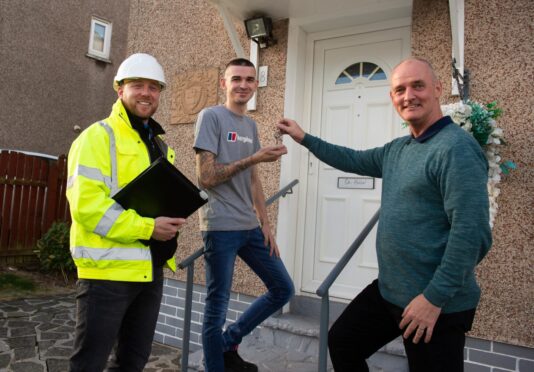
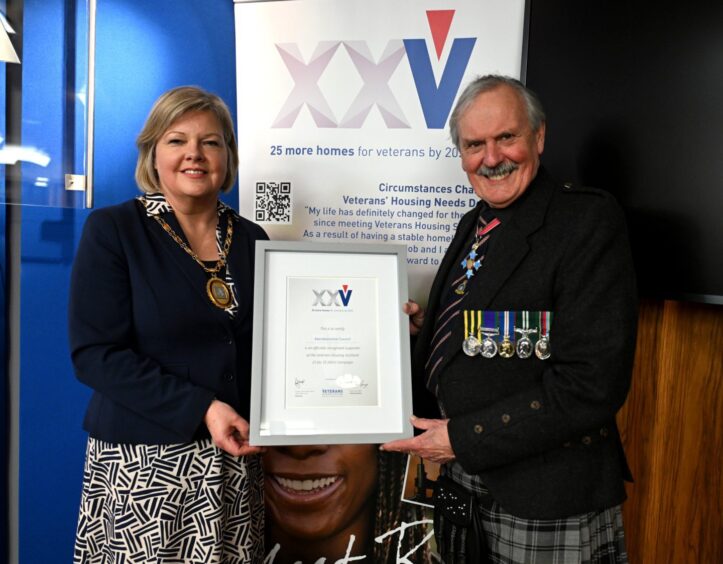

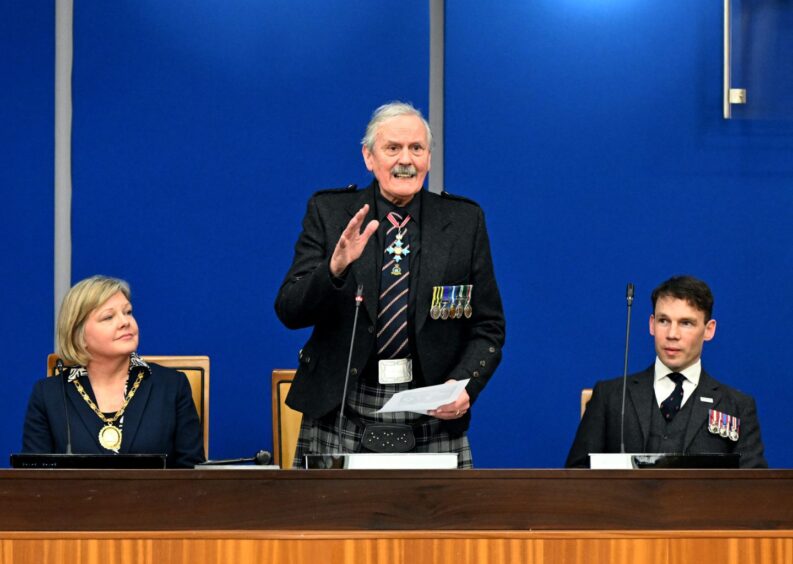
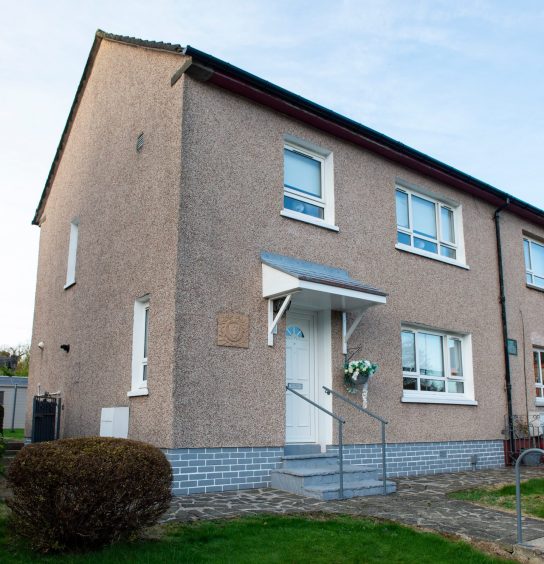
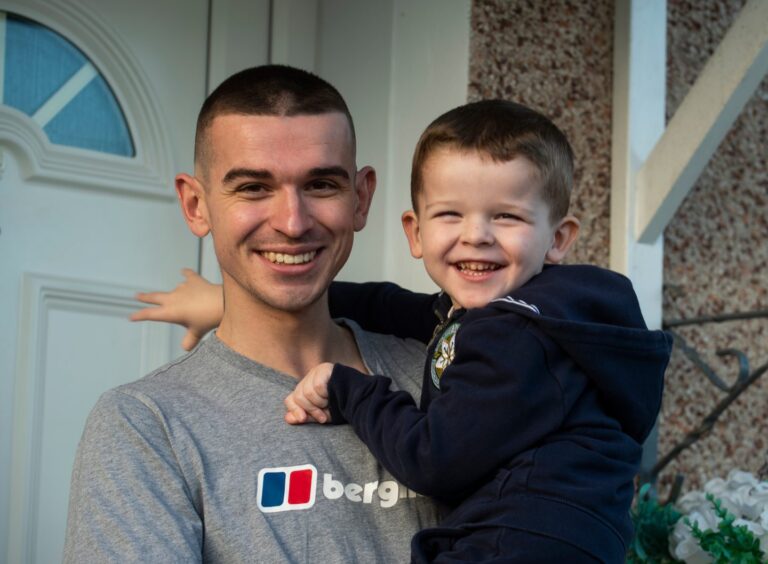

Conversation